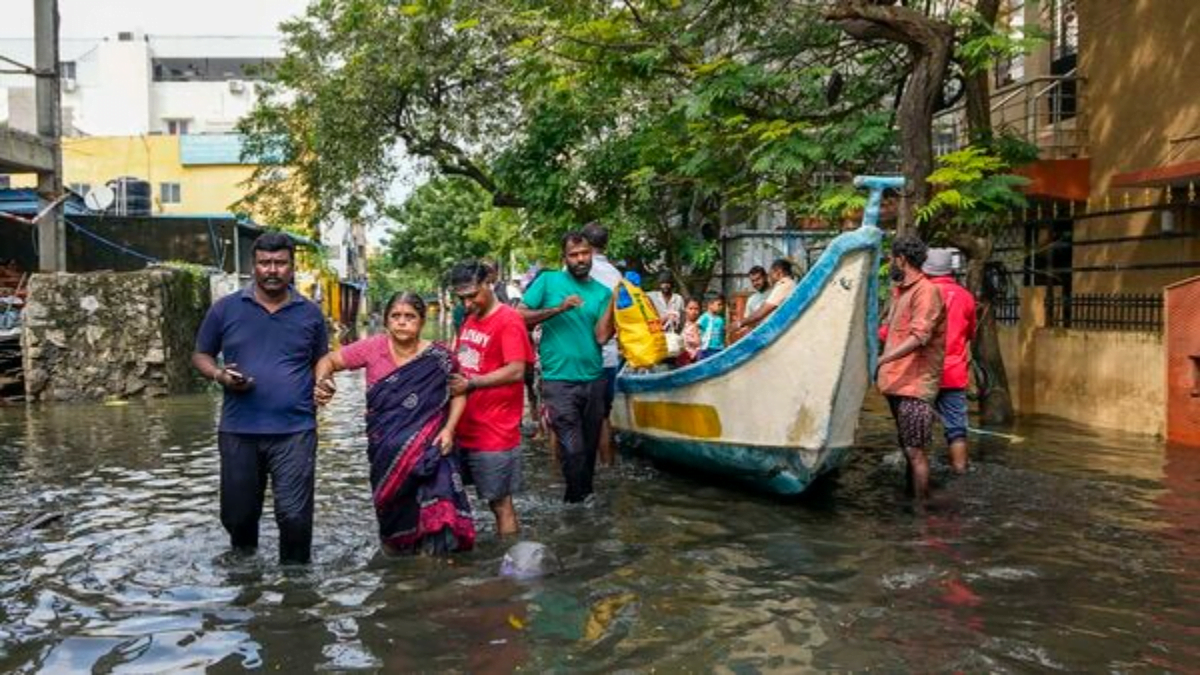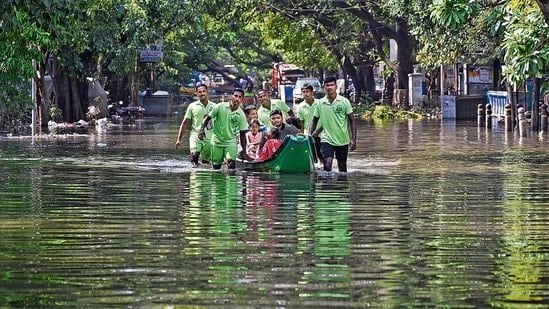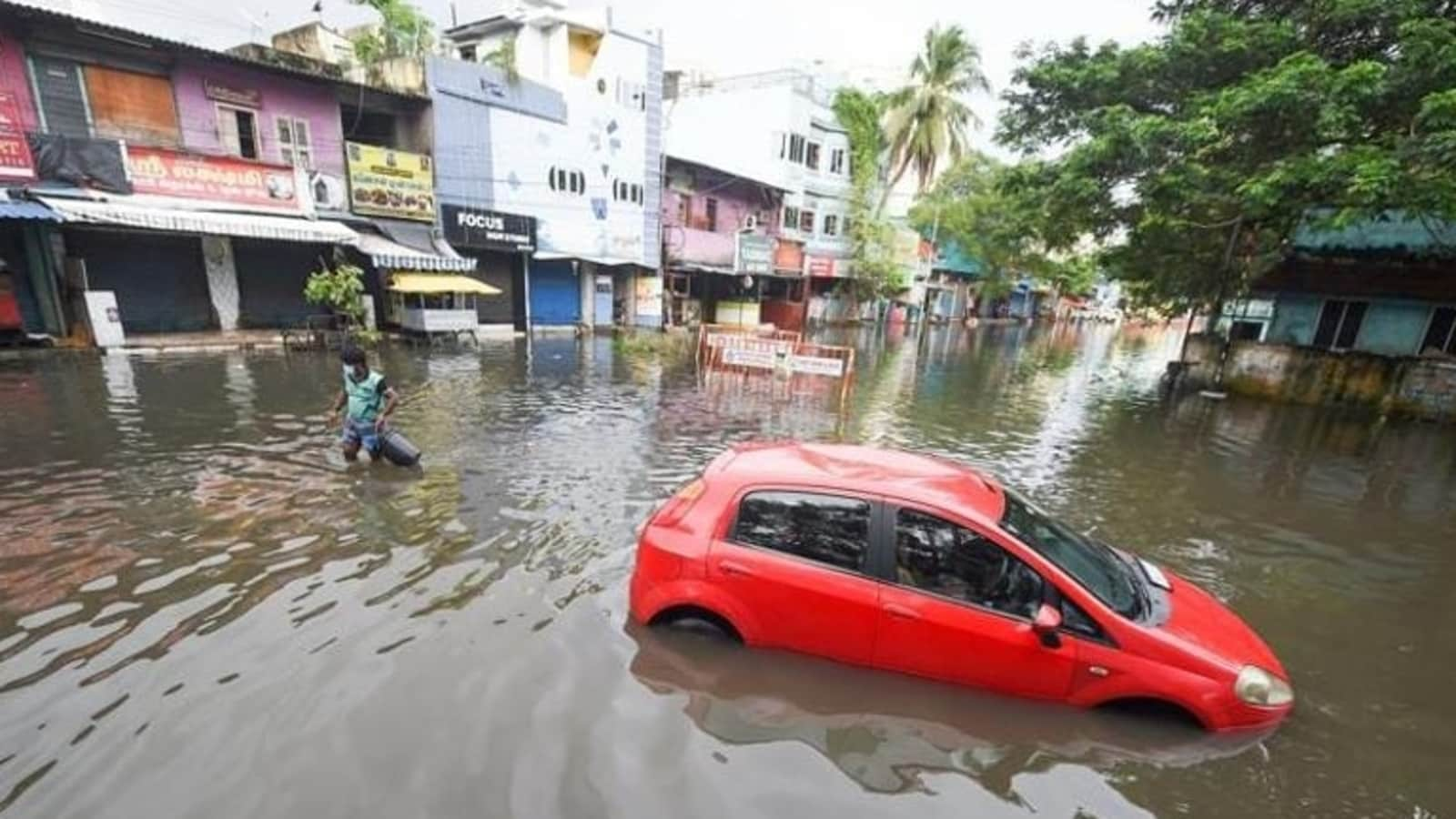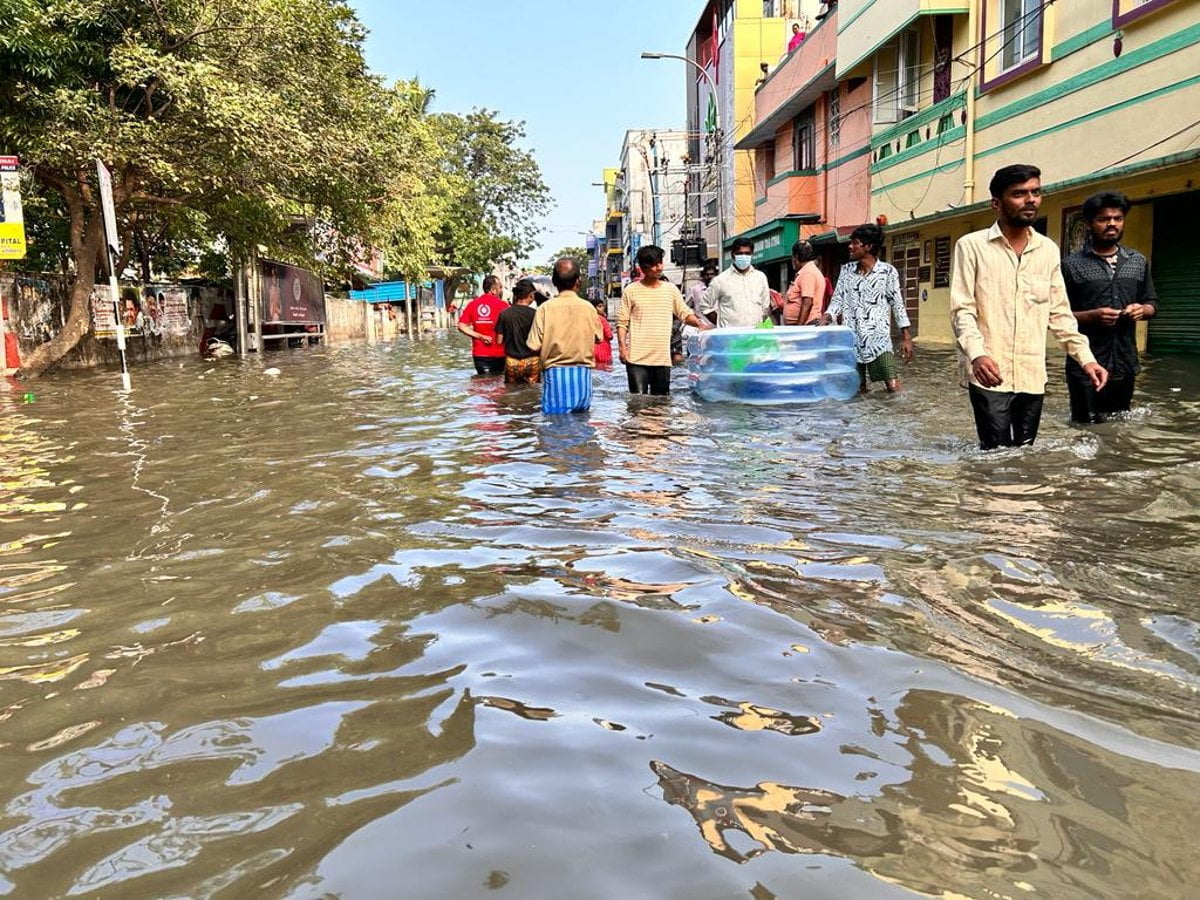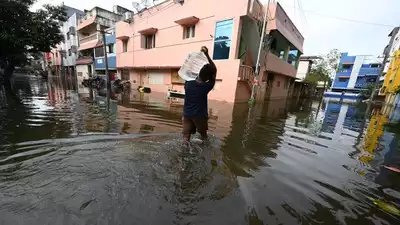Chennai was recently hit with another devastating flood as a result of heavy rains caused by Cyclone Michaung. The Cyclone hit the southern coast of Tamil Nadu and Andhra Pradesh, bringing down heavy torrential rains and winds that flooded the area severely.
The Cyclone hit the southern coast of Tamil Nadu and Andhra Pradesh, bringing down heavy torrential rains and winds that flooded the area severely.
Chennai, the fourth largest city of India, is home to 6 million people and is one of the biggest manufacturing hubs of the city. The heavy rain uprooted trees, and stranded various local inhabitants. Seventy two hours after the cyclone moved to its neighbouring state Andhra Pradesh, major parts of the city were still submerged with stranded water. While at the same time, they barely had any access to electricity, mobile network, or internet connection.
Heavy rainfall and its immediate effects
On Monday, the 4th of December, Chennai experienced a single-day rainfall of 24 cm while IMD categorises rainfall above 21 cm as ‘extremely heavy’. Over a span of 35 hours, starting on Sunday, 8;30 am, Nungambakkam recorded a staggering rainfall of 43 cm which continues till Monday evening.
On December 4, when Cyclone Michaung hit the southern coast of Tamil Nadu, the state government had claimed to be prepared to tackle the effects of it. The government had set up over 160 relief camps prior to the cyclone, had deployed the National Relief Force, and had widely circulated emergency helpline numbers. Approximately 18,729 people including 6000 people within Chennai city limits were removed to a relief camp prior to the rain.
Due to the alerts about the heavy rains, Taiwan’s Foxconn and Pegatron had ceased production of Apple’s iPhone in the facilities nearby Chennai on Monday, 4th December. However, they resumed their operations once again on the following Tuesday.
Rescue missions and evacuation plans
Rescue mission promptly started by taking boats to organise evacuation of stranded inhabitants, stray animals, for delivering food, and oxygen cylinders. The cyclone had hit the city of Chennai with full force and had toppled trees in several places but the corporation staff arrived at the scene soon and cleared them away. Rescue helicopters also flew over flooded localities and dropped food rations to those who are stranded in their homes.
The Cyclone moved to Andhra Pradesh along the coastlines after wrecking disastrous damage on the city of Mumbai. The damage in Andhra was more contained even though waves crashed violently and caused landslides along the shoreline of the state.
Casualty and after-effects of the flood
However, in Chennai, even after seventy two hours, the situation remained dire. Water lay stagnant in and out of homes and the inhabitants faced indefinite power cuts. Greater Chennai Corporation Commissioner Dr. J. Radhakrishnan said, ‘There are pockets of low lying areas we hope to clear soon.’
Like all natural disasters, the worst affected were the poor and the marginalised communities of the state. While the privileged were cleaning water out of their homes and waiting for signals, the poor faced unimaginable loss of their homes and livelihood and remained cramped in rescue camps.
Seventeen people had been declared dead as of December 7 while many were still calling for help and rescue. The city of Chennai is not new to such wreckage and destruction of floods. Cyclone Michaung arrived almost seven years after the 2015 Chennai Flood that had submerged millions of homes, devastated lakhs of lives, and had recorded a casualty of 200 people in the city.
What makes Chennai prone to such devastating floods?
Since 2015, many more cyclones and floods devastated the city in the years leading up to 2023.
In 2016, Cyclone Vardah wreaked havoc in Chennai and caused widespread devastation. In 2020, Cyclone Mandous too affected the city although on a smaller scale. In November of 2021, Chennai was once again flooded and had faced destruction and loss.
Thus, it is evident that the city of Chennai is no stranger to the threat of flood and cyclones. Yet, the city suffers every year and never takes a lesson from it.
Some of the questions that we must ask now after witnessing Chennai go under water every year due to flooding is that, is there no way the government can take precautions against such disasters?
Is the government negligent of this looming threat of natural disaster or is there any underlying issue in Chennai’s urban planning that makes the city prone to frequent flooding?
Is the government negligent of this looming threat of natural disaster or is there any underlying issue in Chennai’s urban planning that makes the city prone to frequent flooding?
In the wake of this devastation, many citizens expressed doubts regarding the city’s planning and infrastructure and its ability to handle such intense rain and wind pressure.
Many questioned whether a better stormwater drainage system would have helped control the situation better. Civil engineer and geo-analytics expert, Raj Bhagat P, commented that a better stormwater drainage system would not have been sufficient for prevention of flooding of the area. He said, ‘This situation would have helped a lot in moderate and heavy rainfall, but not in very heavy and extremely heavy rains.’
Regarding the nature of the disaster and Chennai’s continued cases of flooding every year, environmental activist Nityanand Jayaraman said in an interview to The News Minute, ‘The disaster we are facing now is something they (the present DMK government’s Chennai corporation) have inherited. One thing they need to be careful about is whether they are in the process of contributing to future disasters. Which I would say they are.’
Even though the severity of the damage and loss of over 200 lives was mostly due to reservoir mismanagement and lack of awareness, this recurring case of flooding is mostly due to faulty city planning that makes its inhabitants vulnerable to such disasters.
Chennai is ecologically sustained by three river systems- the Kosathalaiyar, Cooum and Adyar and it also comprises the manmade Buckingham Canal. As urbanisation progressed and inhabitants of the city increased in number, large parts of these water bodies were drained for the town construction.
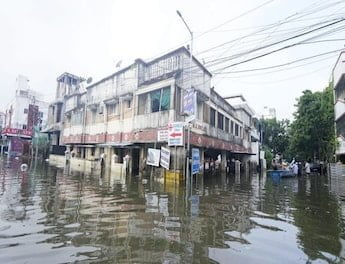
For example, the central Chennai hub of T Nagar, which was once a part of the Long Lake, has been drained and had railway tracks built along it. While the name ‘Lake View’ still remains along this track, there is no longer any waterbody in sight.
With a large area of water bodies clogged and land was filled, the remaining rivers in the state have become a garbage dump. The remaining rivers receive 250 million litres of garbage on a daily basis at present. The Buckingham canal, which drains into the river, receives most of the city’s garbage. According to the Central Pollution Control Board, Cooum river is said to be the most toxic river in the country. The groundwater of the city has also become toxic.
According to the Central Pollution Control Board, Cooum river is said to be the most toxic river in the country. The groundwater of the city has also become toxic.
Due to an aggressive form of urbanisation and expansion of the city limits, several wetlands and low-lying areas have been converted into urban areas. Villas, luxury apartments, IT parks have been built over what was supposed to be floodplains along the river banks.
The four major water reservoirs of the city- Chembarambakkam, Red Hills, Cholavaram and Poondi- are also now being encroached upon by new construction projects. Therefore, a city built by clogging its natural drainage system should consequently be vulnerable to such frequent flooding and man’s greed and voracious appetite for urbanisation is to be blamed for it.
The corporation assures the citizens that the ‘stormwater drains’, built at a budget of Rs. 4000 crores, would drain the excess water in case of such heavy rainfall. But, as the civil engineer and geo-analyst, Raj Bhagat P pointed out that not even a more developed or better system of stormwater drainage could have helped in case of such heavy rainfalls. These ‘micro-drains’ eventually drain into rivers and seas that are already overwhelmed.
Danger of rapid urbanisation and encroachment of wetlands in the name of development
In India, it is quite common for governments across all boards to ignore environmental issues and opt for urban planning and choices that would generate profit in the short term. We are witnessing similar cases of series of flash floods, landslides, and loss of innocent lives in a number of states of India. Recently, Himachal, Sikkim, Uttarakhand also suffered from such heightened cases of flooding.
The intensity of destruction caused by such flash floods can be traced back to similar cases of poor urban planning. The root cause can be traced back to encroachment of low-lying areas, river banks, and rapid urbanisation by construction of hotels, apartments, and expansion of towns and cities.
Sources:
About the author(s)
Debabratee (she/they) is a student of English Literature at Jadavpur University. When they are not found reading or writing, they are found running after their pet dog and cuddling with him. They are avid binge-watcher of all kinds of OTT content and like to dissect and analyse them in their free time.
